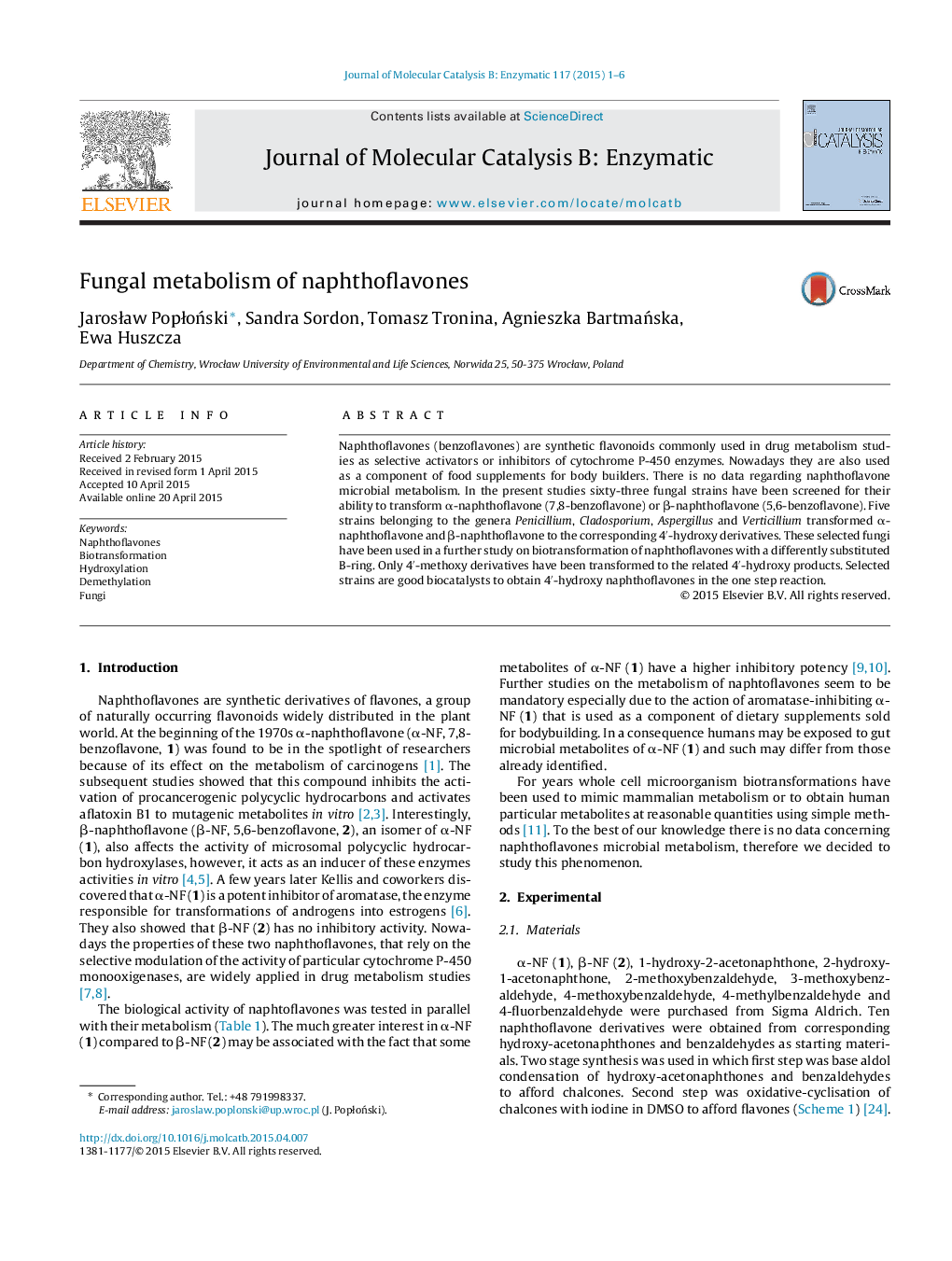| Article ID | Journal | Published Year | Pages | File Type |
|---|---|---|---|---|
| 69702 | Journal of Molecular Catalysis B: Enzymatic | 2015 | 6 Pages |
•Fungal metabolism of twelve naphthoflavone compounds was investigated.•Effect of different substituents in B-ring was evaluated.•Products of 4′-hydroxylation and 4′-O demethylation have been obtained.•Aspergillus and Verticilium strains were most effective biocatalyst.•Fungal metabolism do not coincides with human or rodent metabolism.
Naphthoflavones (benzoflavones) are synthetic flavonoids commonly used in drug metabolism studies as selective activators or inhibitors of cytochrome P-450 enzymes. Nowadays they are also used as a component of food supplements for body builders. There is no data regarding naphthoflavone microbial metabolism. In the present studies sixty-three fungal strains have been screened for their ability to transform α-naphthoflavone (7,8-benzoflavone) or β-naphthoflavone (5,6-benzoflavone). Five strains belonging to the genera Penicillium, Cladosporium, Aspergillus and Verticillium transformed α-naphthoflavone and β-naphthoflavone to the corresponding 4′-hydroxy derivatives. These selected fungi have been used in a further study on biotransformation of naphthoflavones with a differently substituted B-ring. Only 4′-methoxy derivatives have been transformed to the related 4′-hydroxy products. Selected strains are good biocatalysts to obtain 4′-hydroxy naphthoflavones in the one step reaction.
Graphical abstractFigure optionsDownload full-size imageDownload as PowerPoint slide
